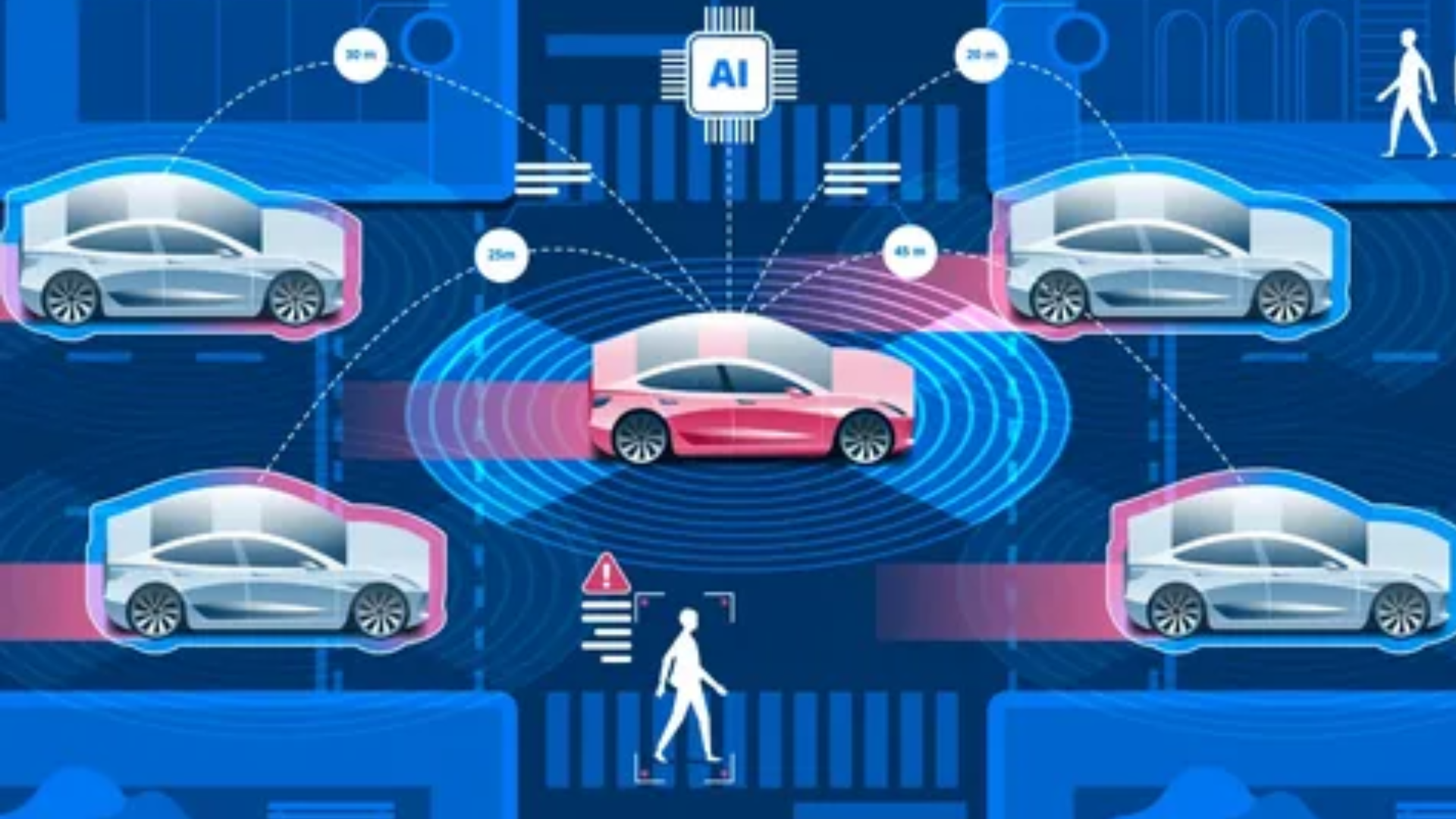As we cruise down the technological highway, the concept of autonomous cars is zooming into the spotlight. These futuristic vehicles promise to take us from point A to point B without the need for a human driver. But before we buckle up for this journey, let’s hit the brakes and examine whether we’re really ready for a driverless future.
What Are Autonomous Cars?
Autonomous cars, also known as self-driving cars, are vehicles equipped with advanced technology that allows them to navigate and operate without human intervention. They use a combination of sensors, cameras, radar, and artificial intelligence (AI) to understand their surroundings. Picture a car that can parallel park itself while you sit back, sip your coffee, and ponder why you ever learned to drive in the first place.
Levels of Autonomy
The Society of Automotive Engineers (SAE) has classified autonomous vehicles into six levels, ranging from Level 0 (no automation) to Level 5 (full automation). Here’s a quick breakdown:
| Level | Description | Example |
|---|---|---|
| 0 | No automation; human driver does everything. | A traditional car. |
| 1 | Driver assistance; some automated features. | Adaptive cruise control. |
| 2 | Partial automation; the driver must monitor. | Tesla’s Autopilot. |
| 3 | Conditional automation; the vehicle can handle some tasks. | Audi’s Traffic Jam Pilot. |
| 4 | High automation; the car can handle most conditions. | Waymo’s self-driving minivans in specific areas. |
| 5 | Full automation; no human intervention needed. | A car that can drive you anywhere. |
With the rapid development in AI and technology, we are on the brink of achieving higher levels of autonomy. But are we really prepared for this change?
The Pros of Going Driverless
Let’s start with the bright side. Here are some key advantages of autonomous cars that might make you excited to trade in your old clunker:
1. Enhanced Safety
According to the World Health Organization, around 1.35 million people die in road accidents each year. Autonomous cars could drastically reduce this number. They don’t get distracted, tired, or impulsive (no road rage here!). They rely on data and algorithms, which could lead to fewer accidents.
2. Increased Mobility
Self-driving cars can provide greater mobility for those who can’t drive—like the elderly or disabled. Imagine Grandma zooming around town without having to rely on anyone else. Just don’t let her pick up her knitting while “driving.”
3. Traffic Efficiency
With cars communicating with each other, traffic could flow more smoothly. No more stop-and-go traffic that makes you contemplate your life choices (like why you left the house in the first place). These cars can adjust speeds and routes in real-time to minimize congestion.
4. Environmental Benefits
Autonomous cars can be programmed to drive more efficiently, potentially reducing fuel consumption and emissions. They could be electric, further contributing to a cleaner environment. Imagine a world where cars glide silently through the streets, and the only sound is the occasional “beep” from a self-parking car.
The Challenges Ahead
While the future sounds bright, there are plenty of bumps in the road to consider. Here are some challenges we face on the journey to a driverless world:
1. Technical Hurdles
Despite the advancements in technology, self-driving cars still struggle with certain situations. For example, navigating complex intersections or dealing with unpredictable human drivers can be tricky. Imagine a car trying to figure out if a pedestrian is jaywalking or simply doing an interpretive dance.
2. Legal and Ethical Issues
Who’s responsible if an autonomous car gets into an accident? Is it the manufacturer, the software developer, or the car owner? These legal gray areas are like a game of “hot potato,” and no one wants to be the one left holding the bag. Additionally, ethical dilemmas arise when programming decisions must be made in accident scenarios. If a crash is unavoidable, should the car prioritize the passengers inside or pedestrians outside? Tough questions!
3. Public Acceptance
Many people are still skeptical about the idea of relinquishing control to a machine. Can we trust a computer to make life-and-death decisions? Convincing the public to embrace autonomous vehicles might take some time—much like convincing your cat to accept a new pet.
4. Infrastructure Readiness
Current road systems and infrastructure weren’t designed with self-driving cars in mind. Upgrades will be necessary to support the needs of these vehicles. Think smart traffic signals, enhanced signage, and even dedicated lanes. It’s like preparing a room for a new houseguest—there’s a lot of organizing to do!
How Are Companies Preparing for the Future?
Many tech companies and automotive giants are racing to develop and deploy autonomous vehicles. Here are a few notable players in the game:
1. Tesla
Tesla has been a pioneer in the self-driving space with its Autopilot feature. They continually update their software to improve safety and functionality. Just remember, “Full Self-Driving” doesn’t mean you can take a nap while your car does the driving.
2. Waymo
Waymo, a subsidiary of Alphabet (Google’s parent company), has been testing its autonomous minivans in Phoenix, Arizona. They’ve even launched a public ride-hailing service. Just don’t expect your driverless ride to show up with a friendly “Hello!”
3. Ford
Ford has committed to investing billions in autonomous vehicle technology. They’re working on everything from self-driving delivery vans to ridesharing services. Just imagine a self-driving pizza delivery car—now that’s a future worth waiting for!
4. Uber
Uber is heavily investing in self-driving technology. They see it as a way to reduce costs and increase efficiency. But let’s hope they don’t get too carried away and start sending out driverless cars to pick you up at 3 a.m. after a night out.
Public Opinion: Are We Ready?
To gauge public sentiment, let’s take a look at some surveys and studies.
1. Trust Issues
A recent survey showed that only 12% of people fully trust autonomous vehicles. It seems most of us are still clinging to our steering wheels, wary of letting a machine take the wheel.
2. Safety Concerns
Many people are concerned about the safety of autonomous cars. With high-profile accidents involving self-driving vehicles, it’s no wonder trust is shaky. “Did that car just run a red light, or was it just testing its improv skills?”
3. Willingness to Adopt
Despite concerns, there’s a significant portion of the population that is open to trying out autonomous cars. The prospect of relaxing during a commute while enjoying a good book or binge-watching the latest series is tempting.
4. Age Factor
Younger generations tend to be more accepting of autonomous vehicles. They grew up with technology and may be more inclined to trust it. Meanwhile, older generations might still be holding onto their keys and reminiscing about the good old days of driving.
The Road Ahead: What’s Next?
So, what does the future hold for autonomous vehicles? Here are a few predictions:
1. Gradual Integration
We won’t wake up one morning to find all cars are driverless. Instead, we’ll see a gradual integration of autonomous features into existing vehicles. Think of it as adding a new layer of frosting to an already delicious cake.
2. Mixed Traffic Scenarios
In the near future, we’ll likely see a mix of human-driven and autonomous vehicles sharing the roads. This scenario will be interesting, to say the least. Imagine trying to navigate rush hour with some cars following the rules and others treating red lights like mere suggestions.
3. Technological Advancements
As technology evolves, we can expect smarter cars that can better understand their surroundings. Expect improvements in AI, machine learning, and communication between vehicles. Just don’t be surprised if your car starts giving you advice on your personal life, too.
4. Regulatory Developments
Governments will need to create regulations and standards for autonomous vehicles. This includes safety testing, insurance policies, and legal responsibilities. If only writing laws was as easy as programming a car!

Conclusion: Buckle Up for Change!
As we steer toward a future with autonomous cars, it’s clear that while we have exciting opportunities ahead, we also face significant challenges. The transition won’t happen overnight, and we must navigate through legal, ethical, and technical hurdles.
So, are we ready for a driverless future? Well, we’re getting there—one sensor at a time. While the prospect of hopping into a car and letting it whisk you away sounds appealing, we must ensure that safety, public trust, and infrastructure keep pace with innovation.
In the meantime, hold onto your steering wheels, folks! The ride is bound to be bumpy, but who knows? Maybe one day you’ll sit back, relax, and enjoy the scenery while your car handles the rest. Just make sure to avoid the “Do Not Disturb” signs—those are meant for you, not your car!


